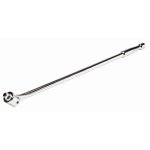I can agree with the pump CFM needed but only AFTER you use the reserve in the tank and tank pressure has dropped to the operating pressure required for the tool. The bigger the tank, the bigger the reserve of air available before pressure drops below working pressure for the tool, AND THEN the pump CFM comes in to play, it's now actually supplying the air to run the tool, not the tank. If you ran the tool tankless, then the pump CFM @ PSI is crucial that it exceeds the tool requirement. I've run 450# 1/2" impacts off of a 1/2HP 3gal compressor, yep I get one lug nut then have to wait for the tank to return to max for another burst, if I use that same impact off my 30 gal I get 5 lugs and the compressor never kicks on, cause I've only used the tank reserve. Next lug and the compressor kicks in.
Another forgotten fact, hose size plays a major factor in impact performance (or any high CFM tool), it doesn't matter what CFM your compressor runs, if you can't get the volume of air through a long skinny hose, it's not gonna perform. I've seen many a folk complain about performance and when you check, you find they have a 50' skinny hose - drop down to a 25' 1/2" and it runs great. Or, if you need to run a long run from the compressor, put a small portable tire inflation tank at your job site, and a short hose to your tool, then the tool runs off the reserve of air in the small local tank and is replenished in between bursts. It's just plain physics at play.
